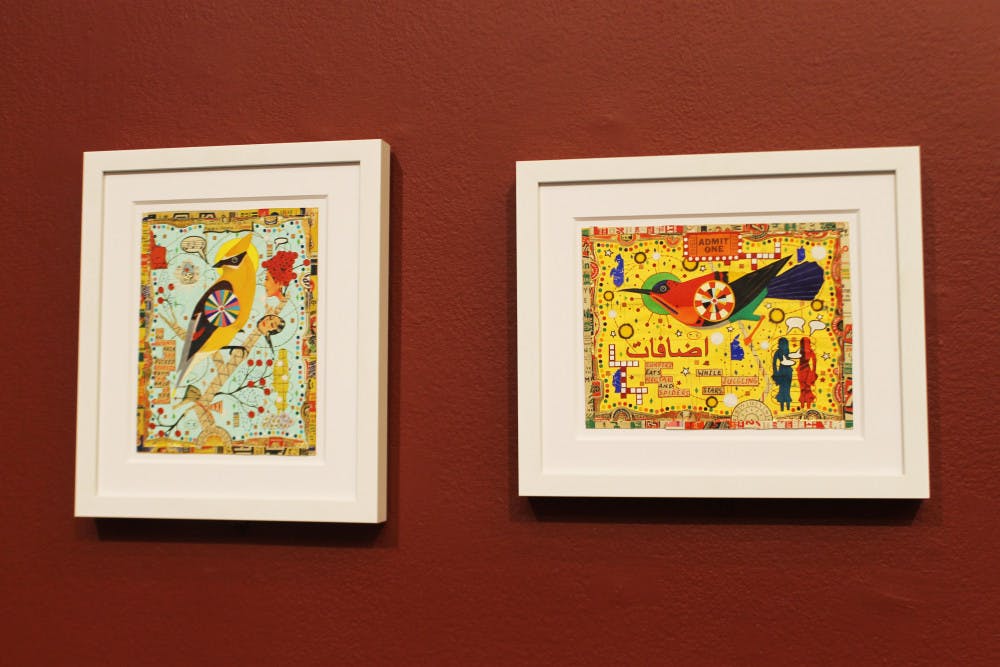Tony Fitzpatrick’s birds flock to List Art Center’s David Winton Bell Gallery in his exhibition entitled “The Secret Birds and Other Works,” which opened Aug. 29 and will be on display through Oct. 25.
Curated by Alexis Lowry, former curator of the Bell Gallery, the exhibition not only demonstrates Fitzpatrick’s talents as an artist but also serves to reveal the symbolic complexities within his work and the influences of his background. Lowry said she highlighted Fitzpatrick this fall because she has long admired his work.
Fitzpatrick draws inspiration from Chicago imagists of the 60s, 70s and subculture pop art, Lowry said. These artists were “looking at margins of society,” she said, adding that Fitzpatrick “comes out of that tradition.”
“He’s not a slick New York artist. He is really down to earth but has big opinions,” said Jo-Ann Conklin, director of the Bell Gallery.
One such “big opinion” that pervades Fitzpatrick’s artwork is his belief in celebrating marginalized and isolated people in society. Many of his pieces, including two collages called “The Apache Weed” and “Trail of Tears,” focus on American Indian culture. In a 2012 post on his WordPress site, Fitzpatrick explains that the reasoning behind many of his collages is to speak up for the American Indian population, which is often overlooked. “Know this: We live on stolen property. Every sidewalk, every gated community, every 7-11. And we descend from the most successful murderers in human history,” the post reads.
Fitzpatrick is not only heavily influenced by his Chicago roots but also by his background in performance, poetry and tattoo artistry, Lowry said. “There is something almost literary about his drawings. … His poems are very visual, and his visual art very literary.”
This rings true in many of Fitzpatrick’s bird collages, such as “Chicago Sapsucker” and “The Magic Catbird,” which incorporate snippets of quotes, packaging labels, clippings and key phrases into the overall scheme of the collages.
“The text helps,” said Korby Simpson ’18. Fitzpatrick “lets the viewer think what they want to think of the piece, even though he helps draw the viewer’s eye to what he thinks is most important.”
True to the multifaceted nature of his work, Fitzpatrick will continue exploring American history through a play entitled “Stations Lost” in Studio 1 of the Perry and Marty Granoff Center for the Creative Arts Friday, Oct. 9.





